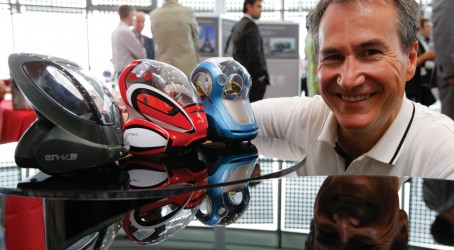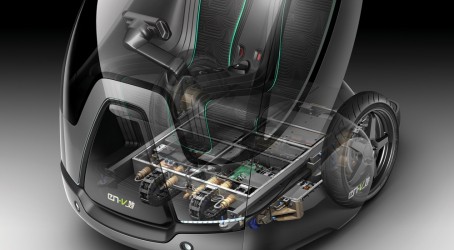For some, the bustling, energised sprawl of a giant city is a limitless, endlessly engaging pleasure; others can’t wait to vote with their wheels and head for the country as soon as humanly possible. Those conurbations termed “megacities”, cities with 10 million or more inhabitants, of which Toyko is the largest and Mumbai and New York notable examples, arguably excite and appal in equal measure. They are the zenith of urban possibility for some; ugly, congested, concrete jungles and polluted blots on the landscape for others.
Whatever your love, or lack of it, for cities, they are the predominant population centres. Nearly half the world’s population – 47% – lived in cities in 2000 and the UN estimates this will rise to 60% by 2030. Much of this growth in urban population is expected to take place in the least urbanised continents of Asia and Africa and by 2025, according to the Far Eastern Economic Review, Asia alone will have at least 10 megacities. The global urban population is expected to grow from 3 billion to nearly 5.2 billion in the next 20 years, the UN estimates.
All of which poses challenges for the automotive industry. Senior figures at General Motors are among the engineers who have been earnestly gazing into their crystal balls in an effort to develop a “car of the future” for this changed cityscape of 2030. The fruits of their labours have been on display at the World Expo in Shanghai, a city which will have an estimated population of 27 million in 15 years. They were also presented earlier this month at City Hall in London (pop: eight million).
The centrepiece in Shanghai is the EN-V, or electric networked vehicle, a small, two-seater EV with a top speed of 40km/h and a range of 40km.
Dr Christopher Borroni-Bird, director of advanced technology vehicle concepts at GM, has been working on the EN-V concept as part of a wider “reinvention of the automobile” programme at the company. “What will be the biggest challenge facing the automotive industry in 2030?” he says. “Mobility.
“We focus a lot on energy and environment but mobility is also going to become an issue. These are interrelated: you’re not going to solve the energy and environmental issues if future vehicles are stuck in traffic, getting zero miles to the gallon.
“Even if vehicles are clean, if they are stuck in traffic the whole time and you can’t find a parking space, consumers are going to question the viability of the product.”
As megacities and smaller cities become more densely populated, Borroni-Bird argues, mobility will become more important. The EN-V is designed with this challenge in mind, featuring a small footprint, high manoeuvrability, and connectivity with other vehicles to enable it to drive itself safely. Thanks to advanced sensors and wireless technologies including GPS, a fleet of EN-Vs can “platoon”, or drive autonomously in a group, breaking off to park, and individual cars can be remotely retrieved from parking spaces by their owners.


The Shanghai Expo provides an ideal setting to demonstrate the concept vehicle’s capabilities because the city and China itself exemplify some of the trends in urban population that will have an impact on the way in which cars are used – and therefore designed – in the future. It is estimated that the country’s urban population will reach one billion by 2030 and that a growing percentage of cars sold globally will be destined for China’s roads.
In megacities such as Shanghai, however, 30% of fuel is wasted looking for parking spaces and half of all journeys are 5km or under. For GM, today’s vehicles are hopelessly unsuited to these challenges.
Add environmental concerns to growing congestion and you have an argument for a new way of approaching car design and manufacture. For instance, today’s passenger cars require 15m2 of parking space once the perimeter around the vehicle is taken into account. The three EN-Vs concepts that GM has developed have a 1.74 metre turning radius – “it can turn on a dime”, says Borroni-Bird – and a length of approximately 1.5 metres. Today’s cars typically are three times that.
According to GM, the reduced dimensions of the EN-V – it also weighs in at less than 500kg – mean that a car park could contain five times as many of the new concept cars compared with conventional vehicles. And on a typical US electricity mix, the car is said to generate around 50g CO2/km.
Borroni-Bird describes the development of the EN-V as a new DNA for the vehicle. He says typical cars are like Swiss Army knives – over-engineered and capable of doing more than they need to: driving for distances and speeds that are simply not usually required in today’s cities. Even in the US, he adds, typical urban daily journeys are for less than 25 miles.
Some of the constraints on electric vehicle design – such as expensive batteries – have been addressed on the EN-V by keeping the vehicle small. But it is not intended to be a concept for all seasons. Borroni-Bird argues that we may well hire a hydrogen-fuel cell-powered car or hybrid for longer intercity journeys while retaining a small electric car for day-to-day urban driving.
He acknowledges that the two-person capacity of the EN-V and lack of luggage space is a constraint but says: “There’s no inherent reason why you couldn’t take this basic platform and size it for three or four passengers.”
Keeping the number of batteries to a minimum means that even with today’s economics the development of a production version is not unfeasible, he adds. “Even with today’s battery technology an economic case could be made for this vehicle. I don’t think we see cost as the major challenge.
“An EN-V design that has room for two passengers with some storage space, and smaller than a conventional car but with less range and performance, could be affordable. It could be a solution – but perhaps not the only solution.”
Other issues that will affect the development of the EN-V or a car like it include its crash performance – the concept would not perform adequately in any current crash test regime, for example – and thus the launch of a vehicle that can safely operate on roads and routes used by other traffic.
One solution could be investment in a “clean sheet” infrastructure, where specific lanes or highways are devoted to cars similar to the EN-V. Borroni-Bird notes that there are scenarios in which car use could be ruled out and fleets of small electric vehicles with limited performance introduced instead, such as within gated communities, university campuses, military compounds, resorts – even entire islands.
“There are a lot of places where a small vehicle like this with limited range could be practical. But if you’re looking at the big market of cities, you have to address the issue of how these vehicles co-exist.”
The engineers and designers behind the EN-V have included the option to drive the car manually, although they believe driving autonomously could benefit disabled or elderly users and free passengers to make calls or even use social networking sites en route. “It’s fun to drive the vehicle because it’s zippy and manoeuvrable, but if you want to let the vehicle take over you can use the ride to do what you want. That’s fun too,” Borroni-Bird says.
We could see vehicles like it driving autonomously on dedicated roads, he believes. “You don’t want to force people not to drive, although driving in an urban environment such as this [London], isn’t much fun.
“If people understood the autonomous system was reliable and had confidence in it, perhaps in terms of a dedicated lane or road that has to be accessed by electronic means, you could make the choice to use it.
“If you were stuck in traffic and looking across at a lane moving quickly with EN-Vs platooning, people would be envious.
“But I don’t think you want to force it. People need to come to that conclusion at their own pace.”